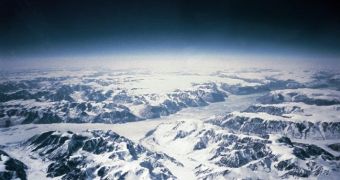It's no longer a secret to anyone that the world's ice caps are melting. At both the North and the South Pole, and in Greenland, the largest expanses of ice on the planet are gradually getting smaller. The main culprit has been identified to be global warming, which climate scientists say heats up the world's oceans. This creates a vicious circle. More warm water equals more ice melt, and more ice melt equals much warmer water, PhysOrg reports.
In the case of the Arctic, whose ices are based on water, and not on land, this is very obvious. Meltwater in this region is blacker in color than that in other places, which means it attracts more sunlight. This causes the waters around the ice cap to warm faster than usual, in turn promoting even more melting, and an amplification of this cycle. As a direct result, ocean levels are increasing at a rate of one inch per decade at this point, but the main issue is that no one really knows how this trend will evolve over the next half a century.
Official statistics supplied by the US National Snow and Ice Date Center (NSIDC) show that, between 1979 and 2006, the rate of glacier loss in Greenland alone increased by more than 30 percent. Recent studies have also shown that the areas affected are not located only in the South anymore. The northwestern coast of the island is already beginning to crack as well, reports show. For Antarctica, data are a bit less clear, but the West Antarctic Ice Sheet, its most sensitive portion, that is, is also losing mass at an alarming rate.
“The take-away message from all this is that the oceans and the glaciers speak to each other, if you will, more often and more strongly than we’d expect. They are not separate systems. If we’re going to understand melting and predict sea-level rise, we’ll need to understand the rhythms of their complex dance. To predict how glaciers will respond, we need to know more about their dynamics,” Pennsylvania State University College of Earth and Mineral Science geophysicist Sridhar Anandakrishnan explains. The scientist has traveled to Antarctica no less than 17 times over the past 25 years, in a bid to gain more insight into how oceans and ice sheets interact and influence each other.

 14 DAY TRIAL //
14 DAY TRIAL //